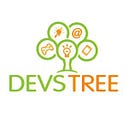Top Programming Languages for Artificial Intelligence (AI)
While many perceive AI as a recent discovery, it has actually been around since the 1950s. What’s new is its surge in popularity and accessibility, particularly since its explosion in 2020. Nowadays, nearly anyone interested in tech is diving into AI programming languages.
Every company relies on SaaS products heavily infused with AI and ML to streamline operations. It’s no longer just about following a trend; it’s become a necessity.
As technology advances swiftly, it’s crucial for top AI developers to master the best programming languages for AI to create innovative and efficient applications. Let’s explore the top 9 AI programming languages and understand why they’re essential.
Whether you’re a novice or an experienced developer, familiarity with these languages equips you with cutting-edge skills.
Top 9 AI Programming Languages You Should Learn:
1. Python
Python has emerged as the leading programming language for artificial intelligence. Its extensive libraries such as NumPy, SciPy, and TensorFlow support advanced mathematical and statistical operations crucial for data analysis, machine learning, and neural networks.
Python’s flexibility allows for rapid prototyping, while its interpreted nature simplifies debugging and iteration. Additionally, pre-built modules like NLTK and SpaCy facilitate natural language processing.
2. Java
Java is a popular choice for building real-world AI applications due to its portability, speed, and vast open-source ecosystem. With libraries like DeepLearning4J and Weka, Java supports neural networks, NLP, and data mining.
Its robust syntax ensures discipline and readability, making it suitable for collaborative and long-term projects.
3. C++
C++ is renowned for its speed, efficiency, and control, making it ideal for high-performance AI systems. It provides access to low-level hardware and memory addressing for optimized computation.
AI applications like real-time video processing and autonomous vehicles rely on C++’s raw computing power. Libraries such as Shark and Caffe offer access to the latest techniques, while the STL provides versatile data structures for AI.
4. Lisp
Lisp, renowned for its association with AI, embodies fundamental concepts such as recursion and lambda functions. Its syntax inherently mirrors hierarchical structures and logic pivotal for AI challenges.
Dialects like Common Lisp offer robust macro systems, facilitating code abstraction and simplifying the implementation of intricate algorithms.
5. Julia
Julia, on the other hand, seamlessly blends accessibility with speed, rendering it perfect for essential scientific computations in AI. Its mathematical syntax resonates with equations familiar to data scientists, and its seamless integration with Python and R enhances its versatility.
Julia adeptly handles the intricate number crunching demands of physics-based AI and other computationally intensive applications.
6. R
R is dominant among statisticians and data analysts, offering powerful visualization and modeling capabilities. Its array of statistical learning packages makes it ideal for predictive analytics and machine learning.
Integration with databases and packages like TensorFlow and Keras allows for neural network creation, ensuring reproducible results and readable code.
7. Prolog
Prolog, designed around logic programming, is ideal for knowledge representation and expert systems. It facilitates natural language processing and aligns with graph-structured AI problems.
It is used in ontology engineering, theorem proving, and game theory applications.
8. Haskell
Haskell, a functional programming language, manages complexity through strong static typing and purity. Its features enable elegant abstractions for AI development, and it includes many research innovations for cutting-edge AI.
9. Scala
Scala seamlessly blends object-oriented and functional programming, making it scalable and concise for enterprise AI applications. Its powerful libraries and Apache Spark integration enable large-scale data processing, while support for concurrency ensures robust intelligent systems.
In conclusion, with AI becoming increasingly pervasive, mastering programming languages for AI development is highly valuable. Whether you choose Python, C++, Julia, or any other language, these options provide the foundation for innovative AI projects. With these robust languages and boundless imagination, AI developers are limited only by their dreams.
If you want to develop your AI-powered application, reach out to us at devstree, where we provide comprehensive artificial intelligence services. Our team of experienced developers and data scientists can assist you in turning your ideas into reality, leveraging the latest advancements in AI technology.
